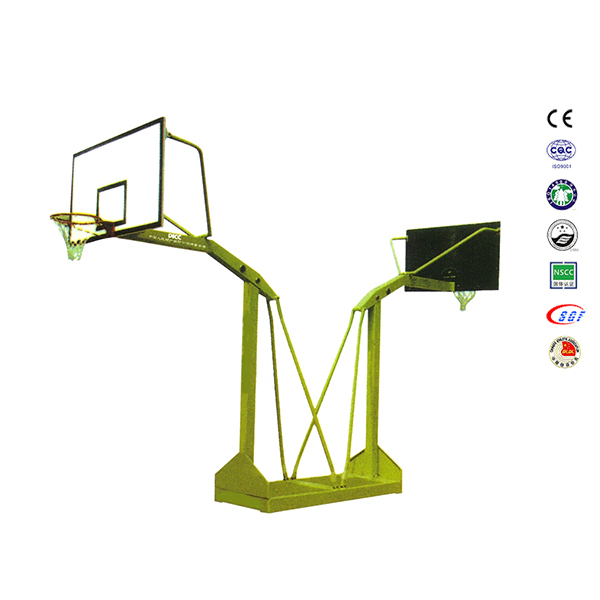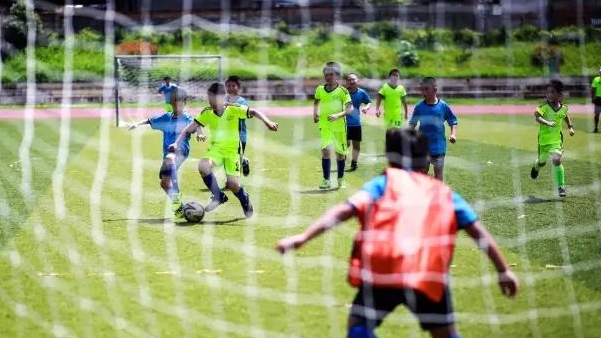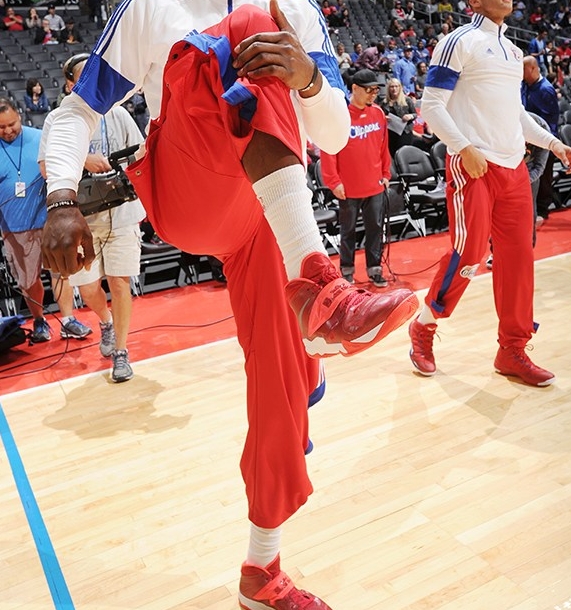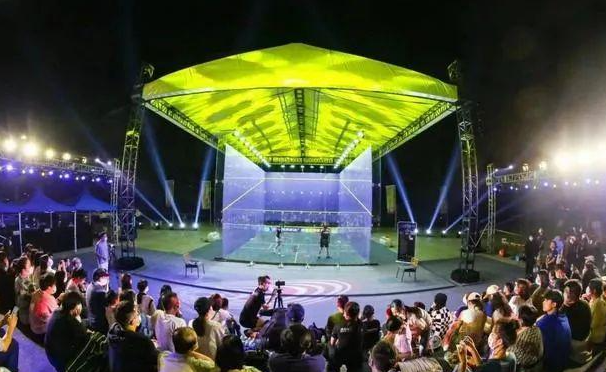Product
What is squash court standard size
Basic Info
There are two types of squash courts, singles and doubles. The following are the detailed dimensions of the two games:
Overall dimensions of singles squash courts:
Length: 9.75 meters (32 feet)Width: 6.4 meters (21 feet)
Front wall height: Height to the top of the front wall line: 4.57 meters (15 feet)
Back wall height: Height to the top of the back wall line: 2.13 meters (7 feet)
Overall dimensions of doubles squash courts:
Length: 13.72 meters (45 feet)Width: 7.62 meters (25 feet)
Front wall height: Height to the top of the front wall line: 4.57 meters (15 feet)
Back wall height: Height to the top of the back wall line: 2.13 meters (7 feet)
A squash court is generally a fully enclosed room with all four sides, bottom and top surfaces completely blocked. The back wall is a tempered glass wall for spectators or coaches to watch or guide.
Size of singles squash court
Length: 9.75 meters (32 feet)Width: 6.4 meters (21 feet)
Front wall height: 4.57 meters (15 feet)
Double Squash Field Size
Length: 13.72 meters (45 feet)Width: 7.62 meters (25 feet)
Front wall height: 4.57 meters (15 feet)
These two sizes are standards set by the World Squash Federation (WSF) for professional and amateur competitions worldwide.
The squash court is divided into front wall, side wall, and back wall. On the front wall of the stadium, there are three lines on each wall, namely the boundary, serve line, and bottom line. All returns must touch the front wall, but cannot go out of bounds. On both sides of the side wall, there is a diagonal line connecting the front and back wall lines, which is the boundary of the side wall. The back wall is the wall behind the stadium, with the upper edge of the glass top serving as the boundary of the back wall. If a return ball hits outside the wall, it is considered out of bounds.
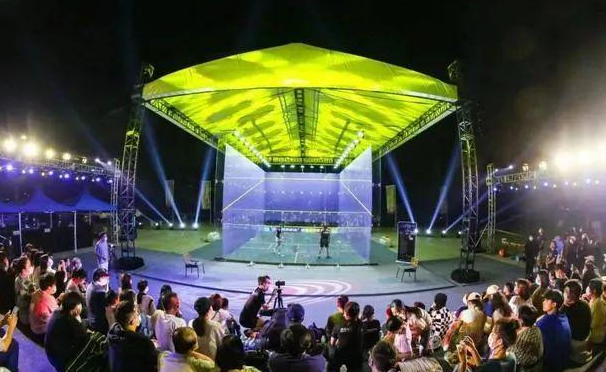
1、 The Origin of Squash
Squash is a sport played in a closed field on all sides. The goal is to make the opponent unable to return the ball before bouncing twice, in order to win points. It combines multiple sports characteristics such as tennis, badminton, table tennis, etc., and has a very good effect on endurance and coordination exercise. It is highly entertaining, entertaining, and entertaining. It is an indoor project, so it is not limited by seasons or weather. The field of squash is small, the ball is fast, and the path is unpredictable, so it requires people's reactions and movements to be extremely fast, and its intensity and amount of exercise are very large.The widely accepted theory about the origin of squash is that in the early 19th century, in the heart of London's Old Town, there was a "fleet prison" that specifically imprisoned debtors and nobles who violated the law and rules. They could not engage in heavy physical labor, so they used instruments similar to rackets to hit small balls on the wall for entertainment and passing time, becoming the embryonic form of squash development. The true meaning of squash was invented by students from the famous aristocratic school in England, Harrow School, around 1830. Although students were aristocratic children, they lived a boring life like prisoners on campus, so an indoor sport of hitting the wall was invented and became popular. It is named after the sound made by the ball when it violently touches the wall, similar to the English word "SQUASH", and is now recognized as squash. Quickly, this recreational fitness sport became popular in schools. In 1864, the first dedicated squash court was built in Harrow, marking the official establishment of the sport.
With the expansion and colonial rule of Britain in the late 19th century, squash was brought to Commonwealth countries by British officers and quickly became popular worldwide. This sport was only popular in schools and universities until the early 20th century.

2、 The Development Overview of World Squash Sports
In the 20th century, squash has been widely popularized. In 1967, a unified and authoritative management organization was established for the World Squash Altar, initiated by the then squash powerhouses Australia, Canada, the United Kingdom, India, New Zealand, Pakistan, South Africa, the United States, and the United Arab Emirates. It was named the International Squash Federation (ISRF) and renamed the World Squash Federation (WSF) in 1992. To this day, the World Wall Federation has developed into a large, tightly organized and orderly organization. At present, there are 138 official members and up to 153 countries and regions engaged in squash sports; There are approximately 125000 Squash courts worldwide.The official international competitions established by the World Squash Federation include: the annual World Men's and Women's Championships, the annual World Men's and Women's Youth Championships, the annual World Team Squash Championships, and the Master's Tournament for middle-aged and elderly players. It is worth mentioning that there are four famous events in the professional squash world, namely the oldest UK Open, Hong Kong Open, Champions League held in New York, USA, and World Open. Every June, another Super Bowl is held for the top 8 ranked players in the world from the previous year. In 1998, squash was officially included in the competition of the Bangkok Asian Games. The World Squash Federation has also actively applied to include squash as an Olympic sport, but the first two attempts were unsuccessful. Firstly, in the competition to enter the schedule of the 2000 Olympics, squash lost to Taekwondo by only two votes and failed to fulfill its wish. In 2005, due to not receiving two-thirds of the votes in the final vote, squash was once again unable to become an Olympic sport and could not be included in the 2012 London Olympics. Looking at the 2016 Olympics, the International Olympic Committee will ultimately decide on the two possible events to be selected at the 2009 Copenhagen Conference, with golf, squash, rugby, karate, baseball, softball, and roller skating being among the options.
Traditional Commonwealth countries still dominate the wall altar, such as the UK, Australia, Canada, India, South Africa, among which the UK has the highest level. These countries not only have a long history of squash, a systematic training and selection system, but also have a large number of field facilities. Among the nearly 50000 standard stadiums worldwide, there are approximately 26000 in Europe, with nearly 9000 in England alone. The countries and regions with good development in Asia include Malaysia, Pakistan, India, and Hong Kong, China.
In the rapid development of squash in the past 30 years, many outstanding players have emerged in the world of squash: Heather McKay, who had never met an opponent in her ten-year career from 1966 to 1977; Susan Devoy won the British Women's Open championship eight times from 1984 to 1992. Jonah Barrington in Ireland, Geoff Hunt in Australia, and JahangirKhan in Pakistan all became legends in the squash world from the 1960s to the 1980s. Of course, it cannot be ignored that multi time world champion JansherKhan became a perennial general from the late 1980s until his official retirement in 2000. Nowadays, a new generation of young players dominate the world: Amr Shabana in Egypt, Gregory Gaultier in France, James Willstrop in Britain, Nicol David in Malaysia, Rachael Grinham and Natalie Grinham, sisters in Australia, etc.
It is worth mentioning that the Khan family in Pakistan has produced many world champion level players in this event, among which the most legendary is "Jordan of the squash world", the wall supremacy of the 1980s - Jahangir Khan. He won the World Squash Junior Championships at the age of 17 and has won 10 consecutive British Open championships and 5 World Open championships. In the nearly six years since the 1981 British Open, he has created an unprecedented myth, never losing a single game in over 800 official matches for five consecutive years, seven months, and one day. The only thing others can do is to compete for how long they can deal with him. The Egyptian Ivan fought against him, which took 2 hours and 46 minutes, and was recorded in history due to the longest duration. Until 1986, New Zealander ROSSNORMAN defeated the squash czar in five tough matches and won the world championship. Although the overall strength of Pakistan's squash has been declining in recent years, nearly 20 Pakistanis surnamed KHAN can still be seen among the top 100 players ranked by the World Men's Professional Squash Players Association.
Currently, among the top squash players in Asia, the male player is Wang Pingxi from Malaysia, and the female player is Zhao Yongxian from Hong Kong. Rebecca Chiu (born November 24, 1978) is known as the "Little Whirlwind". As of September 2008, it ranked 14th in the world. Became a full-time squash player in 2000. In the 2002 Busan Asian Games, Zhao Yongxian won the gold medal in the women's squash singles event. In 2006, she won the women's individual runner up at the 13th Asian Squash Championships. On January 21, 2007, Zhao Yongxian won her first squash challenge cup championship by defeating Australian player Brown in three straight sets as the first seed in the women's squash challenge cup final at the Hong Kong Squash Centre. Trained with world-renowned athlete Qiao Peichen. Awarded the "Best Female Athlete of the Year in Asia" by the 2003 Asian Squash Association. Participated in the Beijing 2008 Olympic Torch Relay at Hong Kong Station.

Building The Best Glass Squash Court
3、 World Squash Administration
The World Squash Federation (WSF) is located in the United Kingdom. Formerly known as the International Squash Union, it was established as early as 1967 and later renamed as the World Squash Association in 1992. It is a globally recognized squash organization responsible for promoting and developing the sport of squash around the world.The Asian Squash Association (ASF) is located in India. The Asian Squash Association, established in 1980, is a regional organization of the World Squash Association, mainly responsible for promoting the development of squash in Asia, connecting and safeguarding the common interests of all members.
The World Men's Professional Wall Fighter Association (PSA) is located in Wells. Formerly known as the "International Wall Fighter Association", it was established in 1973 and officially renamed as the "World Men's Staff Wall Fighter Association" in 1992. Its main responsibility is to organize and co organize the World Men's Squash Tournament, known as the "World Men's Staff Squash Players Association Tour.". The association is also responsible for the world men's rankings and works closely with the World Squash Association and the World Women's Squash Players Association to ensure the smooth progress of international squash competitions.
The Women's World Wall Fighter Association (WISPA) is located in the UK. Established in 1983 with the aim of uniting professional female squash players from around the world and increasing their competition opportunities.

4、 The Introduction and Development Trends of Squash Sports in China
Hong Kong is the earliest region in China to develop squash sports. At the beginning of the 20th century, the British army introduced squash as a sport to Hong Kong. The first squash court in Hong Kong was built on the demolished Victoria Barracks (now located in Hong Kong Park) and named the Hong Kong Squash Centre. It is now the headquarters of the Hong Kong Squash Association. The Hong Kong Squash Association was officially established on September 19, 1961. As early as 1979, Mr. Bi began hiring full-time employees. At present, there are nearly 700 Squash courts in Hong Kong alone, with as many as 900000 people participating in the sport. Playing squash has become a common fashion sport in the local area.The development of squash in mainland China has only been in recent years. The domestic squash sport first appeared in foreign embassies and high-end hotels. In April 1999, at the first national squash workshop held in Beijing, more than 10 provincial and municipal sports bureaus and sports units selected colleges to participate in the training. In October of the same year, the first National Squash Championship was held in Kunming, and the first national squash champion was determined, marking the beginning of the development of squash in mainland China. But the development of squash in China also has many constraints: firstly, the lack of venue facilities. At present, there are only over 100 venues in China, with Beijing having the largest number of venues, only around 20. The lack of venues also to some extent prevents its price from falling to a more widely accepted price, while directly affecting and limiting the number of personnel participating. Secondly, the public's awareness of squash is relatively poor. In the eyes of most people, squash is still a "noble sport" with a high threshold
I believe that with the gradual improvement of people's living standards and the popularization of squash knowledge, more and more people will participate in the sport of squash, and those who participate will also have a strong interest in this sport, making it a lifelong sport. The cultivation of squash players in our country will also become increasingly standardized and systematic, continuously improving the professional competitive level of squash sports and stepping onto the international competitive stage as soon as possible.
Previous What is squash the sport






